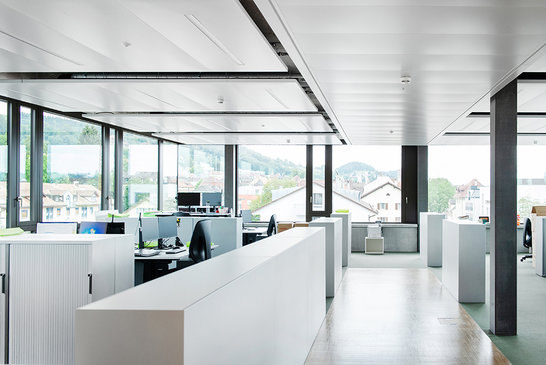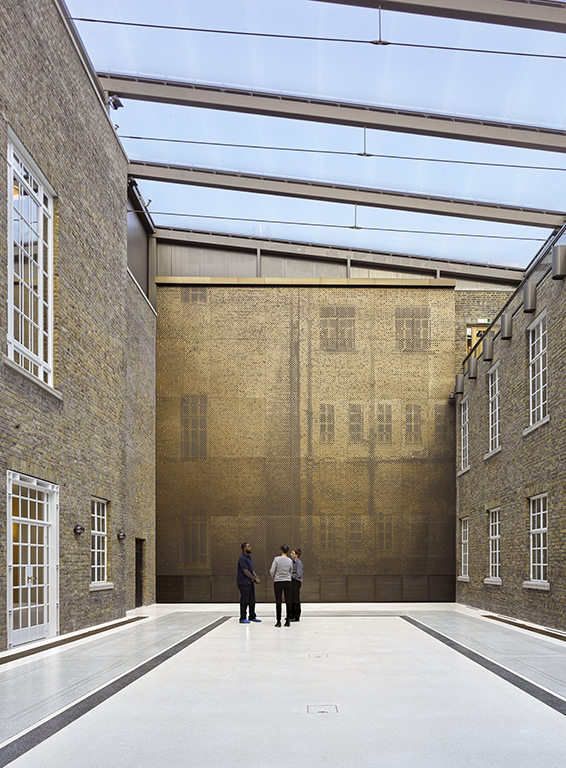
The Great Indoors
It all starts with light. For years, architects have realised the benefits of natural light.
It’s one of the cornerstones of wellbeing and sustainability, rooted in real benefits: health, happiness, comfort and productivity. Together with reducing reliance on artificial lighting, architects are focusing on increasing the amount of glass in the building envelope to deliver these benefits. But how are they spreading these benefits further into their spaces?
Bright ideas in reflectance
The first method: creative ceiling design. Floating ceilings, canopies, baffles and contemporary design can play with light and shade to add depth to a space and spread light beyond window areas. Combined, perhaps, with skylights or vents permitting further inflow, this can also create an instant connection between outdoors and indoors. And if artificial lighting is absolutely necessary, creative ceiling design can conceal equipment, or make energy-efficient LED lighting into feature pieces – enhancing aesthetics and wellbeing in everything from commercial and retail to office spaces.
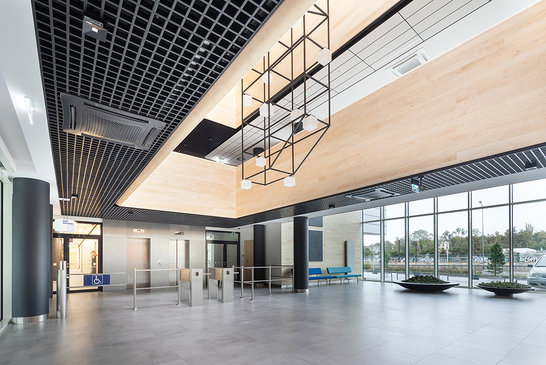
Another method of ensuring the availability of natural light is reflectance. Ceiling solutions with class-leading whiteness, alongside intelligent use of open-plan space, can brighten spaces and enhance wellbeing. And, while certain projects have used darker colours, these are increasingly design statements – punctuating breakout spaces, for example. In general, we’re seeing a lightening of ceiling design, with preference for systems that retain their brightness to bring the radiance of the outside world inside. But we’re seeing this go further…
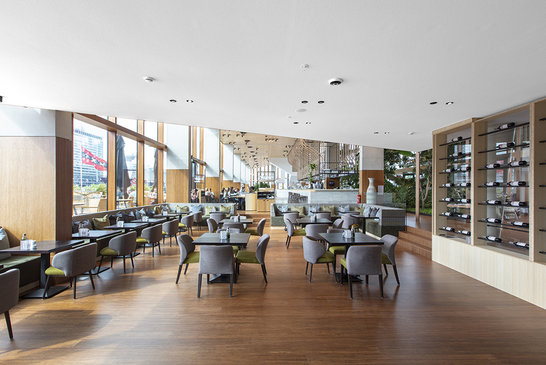
Letting the world in
Just as boundaries between home and work are dissolving, we’re seeing more and more outdoor touches on indoor workspaces: extensive use of glass and greenery, flooding areas with natural daylight, improving air quality and thermal comfort, and giving people a greater sense of space.
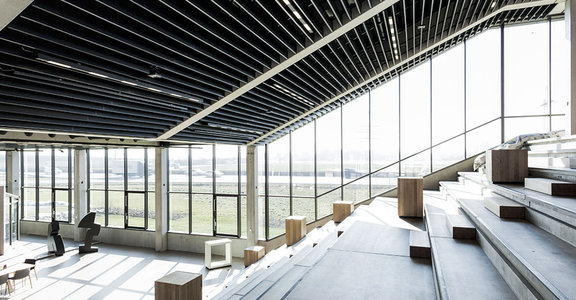
This is also an indicator of the growing importance of sustainability. Future-focused workplaces, retail, leisure and commercial spaces are bringing indoor vertical gardens and green rooftops into their architecture, combining them with natural materials – bamboo, for example – and generous use of glass, to make spaces more desirable to work, shop or relax in. And, ultimately, this progression towards more open, transparent, naturally inspired aesthetics gives us another reason to be cheerful about our architectural future – the rise of living buildings.
Increasingly, architects are pledging that their future will be built around sustainability. Green buildings are the aim – with the Infuture Hatalska Foresight Institute and Skanska making them a ‘pillar’ of tomorrow’s office buildings. The International Living Future Institute has taken this one step further with its Living Building Challenge; going beyond codes of sustainability to make a positive environmental impact through a rigorous set of construction criteria.
As buildings become greener, as ‘living buildings’ bring nature into the built environment, and as the bounds between interior and exterior spaces dissolve, the principles we design and build with today will be vital. Principles like smart design and high-reflectance ceilings that harness the potential of daylight and spread it throughout brighter, richer and more uplifting spaces that enhance sustainability and wellbeing. It all starts with light.
